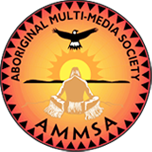Article Origin
Volume
Issue
Year
Page 2
Jurisdiction for Aboriginal languages must be given to the Secretary of State, not the Department of Indian Affairs, according to a position paper to be submitted to the Assembly of First Nations language conference scheduled for next month.
The associate director of Dr. Anne Anderson's Native Heritage and Cree Culture Centre, Buff Parry and Aaron Minoose will be submitting their position paper which has had input from Anderson, calling for a heritage language institute ? sections of which would be located in Edmonton, Toronto and Montreal.
Parry says it is vital that Aboriginal languages be taught at the "grassroots" level along with other language communities, such as Maswachees Cultural College at Hobbema or the Dr, Anderson centre in Edmonton.
In his paper, Parry points out that there is "no world alphabet more alien in shape and sound to indigenous scripts of the true Americans than the Roman English . . . and now it appears Native languages are considered Canadian heritage languages with English and French having the exclusive privilege of being so-called 'founding languages.'
Parry says that the imposition of a "foreign" language and writing forms on Aboriginal people hinders young Aboriginals from developing a sense of nationhood.
However, he says the fact that the first nine original Algonqian-Cree syllabic symbols "are nearly identical to many other world scripts used by up to half of the human species" should be enough reason to bring Native writing systems to the level of a founding script.
Parry, who maintains that the Rev. James Evans did not "invent" the syllabics, says he cannot find "one shred of evidence" from Evan's diaries or letters saying how or even exactly when he invented the syllables.
"There is, one the other hand, a combination of partially revealed Cree and Hopi legends about a teacher-healer name Badger-Call who taught the Cree syllabics long before Evans," he says.
He points to several similarities between the Cree syllabics and ancient language forms and says the syllabics are very closely associated with Aramaic, the script Jesus used and the one Moses inscribed on the tablets of stone containing the ten commandments.
He says he has other evidence, such as records from John Cabot, who in 1497 wrote that he discovered "fallen trees bearing marks." Also, in 1653 Father Bressani reported Cree Indians used "little sticks instead of books which they mark with signs . . . by the aid of these they can repeat the names of a hundred or more presents, the decision adopted in councils, and a thousand other particulars."
Parry quotes Cree Chief Fine Day, who spoke of the Cree syllabary to an American anthropologist: "When the writing was given to Badger-Call he was told 'the missionaries will change the script and will say the writing belongs to them.'"
Parry also points out that the Cree were not the only writers. The Micmac Indians of the east coast also had a unique script similar to Egyptian hieroglyphs.
"Here we have certain proof of deception in terms of the 18th century priest Pierre Maillard, who is said to have claimed the invention of the hieroglyphs when he died in 1761."
Similar hieroglyphs had been found in Egypt, but no one knew how to read them. However, Maillard published a translation 61 years before the Rosetta stone (a stone inscribed with both the hieroglyphs and Greek), was uncovered that allowed archeologists to translate the Egyptian lettering.
The Egyptian hieroglyphs were translated exactly as Maillard had written at a time when no one knew what they meant, says Parry, who points to numerous similarities between the two scripts.
Another script Parry points to is the Indian signatures on the Nipmauq Deed of 1681. These signatures have now been compared to ancient Cyprian (or Cypro-minoan) script. And the Cherokee alphabet also shows similarities to the Cyprian script.
Parry feels that the reason many experts do not recognize the pre-Columbian writin styles of Aboriginal people is due to a "blockage in the perception of the greater truth.
"No one wants to believe these theories, although there is enormous evidence," he says. "And my theories aren't the only ones being questioned. There is evidence that Indians moved east to west and mined the Rocky Mountains . . . there is evidence found in Vatican archives that proves Columbus knew exactly where he was going when he discovered the Americas.
This cover up or pre-Columbian history is no idle charge when Quebec archives provide all the evidence, along with the Jesuits themselves, that the Vatican ordered all Native-related documents destroyed."
Parry will be addressing the assembly conference Jan. 17, 18 and 20 in Ottawa.
- 2924 views
